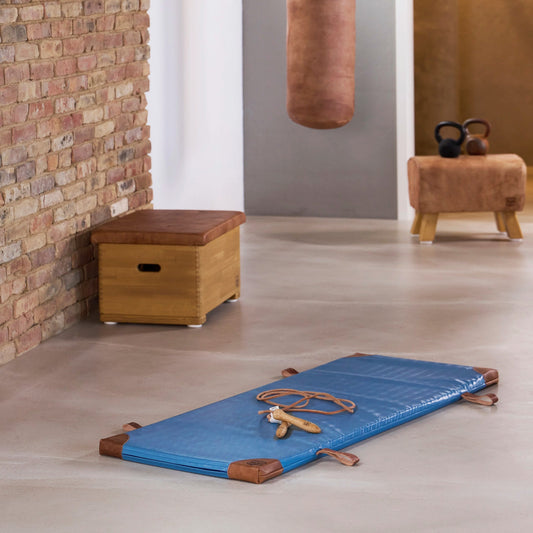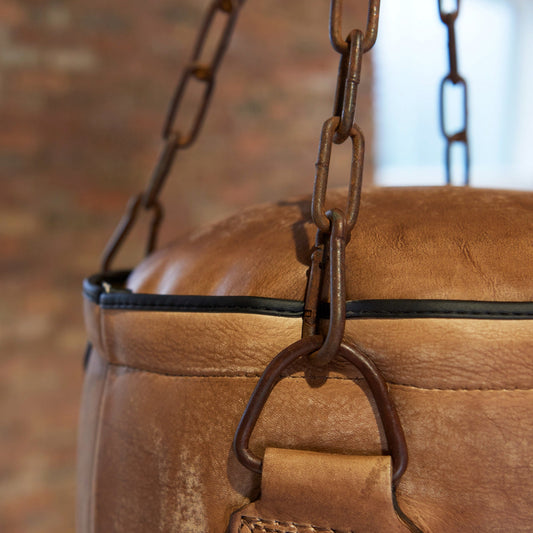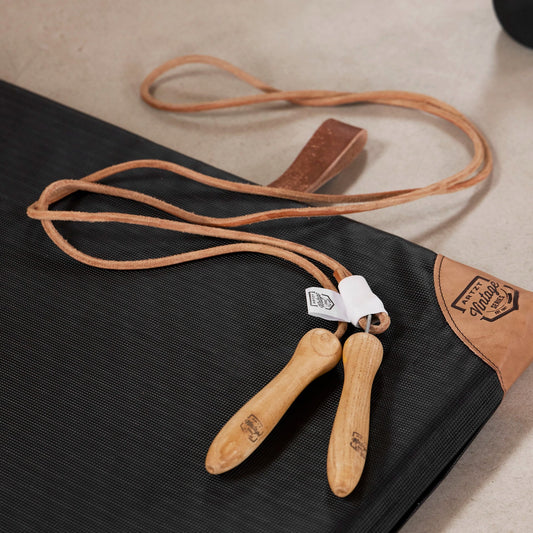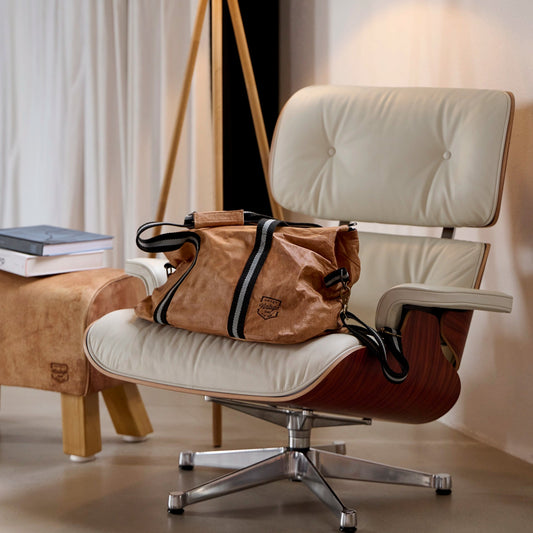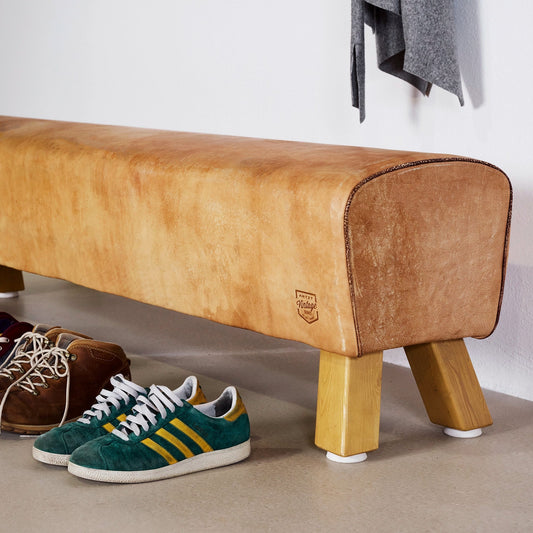
Rope skipping - 5 tricks for beginners
Share
Reading time: 5 min
A classic form of endurance training is rope skipping. TV fitness coach and personal trainer Arne Derricks explains that rope skipping is not only fun, but can also be used effectively as a workout. He shows you five great exercises to get you started with training.
Contents
What benefits do I get from jumping rope every day?
Which jump rope is right for me?
Can I lose weight by skipping rope?
The best tips for rope skipping
That’s why rope skipping is the perfect workout
What benefits do I get from jumping rope every day?
Jumping rope every day has many benefits for your body and mind. First of all, it is an excellent cardio workout that increases your heart rate and improves endurance. The continuous jumping activates and strengthens many muscle groups, including your legs, glutes, core and arms. This helps improve posture, stability and overall muscle strength.
Jumping rope is also an effective way to burn calories and promote weight loss by boosting metabolism and causing the body to burn excess fat. The increased heart rate during jumping rope helps to improve blood flow and oxygen supply throughout the body. The result: more energy and a better overall sense of well-being.
Your mental health also benefits from jumping: Like most sports, jumping rope causes the release of happiness hormones in the body. This reduces stress and can even prevent symptoms of depression in the long term.
Which jump rope is right for me?
There are several factors that come into play when choosing the right jump rope, such as your fitness level, your training goals and your height. Here are some general recommendations to help you choose a suitable jump rope:
- Adjustable length The rope should be easy to adjust to your size. An adjustable rope allows for an optimal fit and prevents tangling during training.
- Material Some of the most commonly used materials for jump ropes are steel, nylon and leather. These durable materials promise years of training pleasure.
- Weight The weight of the rope can vary and depends on your training goals. A heavier rope will have more resistance and help build strength and endurance, while a lighter rope is better for high speed and endurance.
- Handles The handles should fit comfortably in the hand to minimize friction and avoid fatigue. Some handles are ergonomically shaped and offer a better grip. The wooden handles of the vintage skipping rope have ball bearings and offer a good grip even for sweaty hands.
Ultimately, choosing the right skipping rope depends on your individual needs and preferences. With the Vintage skipping rope, we offer you a good all-rounder that meets all of the above criteria and is also suitable for beginners .
Can I lose weight by skipping rope?
Absolutely. Jumping rope can be a very effective exercise for losing weight and reducing body fat. Here are the top four reasons why jumping rope is a great exercise for weight loss:
- Calorie burning Skipping rope burns calories very quickly and effectively. It is estimated that up to 10 calories can be burned per minute. This makes skipping rope training more effective than running or cycling, for example. Even ten minutes of training can really make a difference.
- Full body workout When you jump rope, you train your entire body, especially your legs, core and arms. This promotes muscle building and also increases fat burning.
- Interval training By jumping quickly and taking short rest periods, rope skipping can also be done as HIIT (High Intensity Interval Training) to speed up your metabolism and increase fat burning. This way you can vary the intensity of your training each time as you wish.
- Increased Endurance Regular rope skipping can also improve cardiovascular health and increase endurance, which in turn leads to higher calorie burn.
To lose weight effectively with jumping rope, the workouts should be done regularly and combined with a healthy diet. A training plan that combines interval training and variety in exercises can also help you make progress.
The best tips for rope skipping
A good jump rope is a great way to make your workout more varied and effective. The vintage jump rope features solid wooden handles, a heavy leather rope and is connected to the handles via ball bearings to enable a round rope stroke. The length of the rope can be individually adjusted without having to wrap it around the hand.
To make your training even more effective, here are some tips you should consider.
Tip 1: The right material
To make training really fun, it's worth using a really good skipping rope. The skipping rope from the ARTZT Vintage Series offers a number of advantages: solid wooden handles that fit comfortably in the hand, the rope is made of heavy leather and is connected to the handles using ball bearings. This allows for a really round rope swing. It can also be adjusted in length.
Tip 2: Equipment and surface
In addition to the right rope, the surface also plays an important role: make sure you wear well-cushioned shoes for training and look for a surface that is not too hard. Wood or rubber flooring or - for those who want to train outside - a flat meadow or soft forest floor are ideal. This way, ankle and knee joints are not overloaded.
Tip 3: The right rope length
The right rope length also plays a crucial role: Here, the ARTZT Vintage Series skipping rope offers the advantage that you can flexibly adjust it to your individual length without having to wrap it around your hand.
You stand with one foot in the middle of the rope, the two ends (not the handles) should be about chest height. This is the perfect length for making optimal jumps.
Tip 4: The right technique
Before you start, stand parallel with your arms slightly turned outwards and your palms facing forward. The actual movement when jumping comes from the wrist, rather than the shoulder joint.
To begin with, swing the rope with one hand on the outside of your body, with both handles in that hand. Now swing the rope evenly, keeping your elbow close to your body. Pay attention to the thud when the rope hits the ground. That is the rhythm.
Now jump in rhythm with the one-arm swing to familiarize yourself with the jumping rhythm. It is important that you never land with your entire foot on the ground, but rather with small, plyometric jumps on the balls of your feet. This is much easier on your joints and more comfortable!
For the basic two-legged jump, you take the rope behind your heels, swing the rope from your wrist and jump in small, quick movements without lifting too far off the ground. You will quickly find your own rhythm, even if the rope might get tangled on your feet or head at first.
Train in intervals of 1 minute of jumping, 30 seconds of rest for at least 5 to 10 minutes to achieve a training effect.
Next up is the running jump, which is popular with boxers. Starting from the basic jump, you now vary it by pulling up your heels alternately when the other foot is on the ground, so that something like a running movement is created.
Tip 5: Variations of the basic jump
To ensure that the training doesn't become boring once you've mastered the basic jump and running jump perfectly, you can incorporate further variations that make the training more challenging and varied.
For example, you can do the twist, where you rotate sideways from the hips in a twisting movement, or the cross over, where the arms and thus the rope are crossed in front of the body.
As you can see, with the vintage skipping rope you have many different options for warming up before training or generally improving your endurance. This simple training will not only make you fitter, but will also help you shape a slim silhouette.
That’s why rope skipping is the perfect workout
Training with the right skipping rope is an effective way to increase endurance and shape a slim silhouette. In addition to the right rope, the surface is also important to protect the ankle and knee joints. Good cushioned shoes and a floor that is not too hard are recommended.
Daily rope skipping has a variety of benefits for the body and mind. It is an effective way to improve endurance, build muscle strength, burn calories and reduce stress. Regular rope skipping can increase physical fitness and promote a healthy and active lifestyle.
As always, if you suffer from joint problems or other injuries, first seek professional advice on whether rope skipping is suitable for you.
To learn the jumping technique, you should start with simple exercises such as the one-arm swing or the two-legged basic jump and perform these in intervals of one minute each. Once you have mastered the basic and running jump, you can incorporate further variations such as the twist or the cross over to make the training more varied and challenging.
With these tips, nothing stands in the way of an effective and varied workout!




